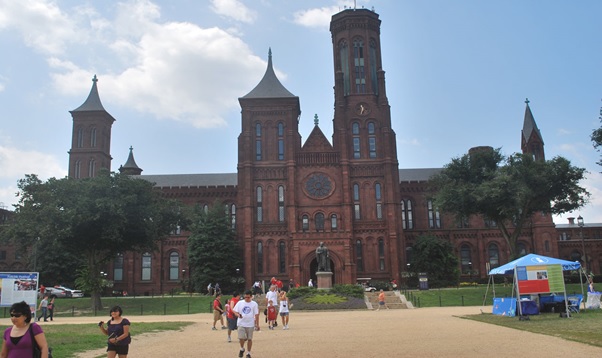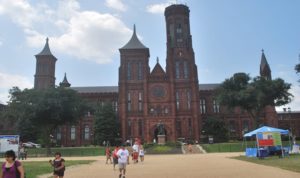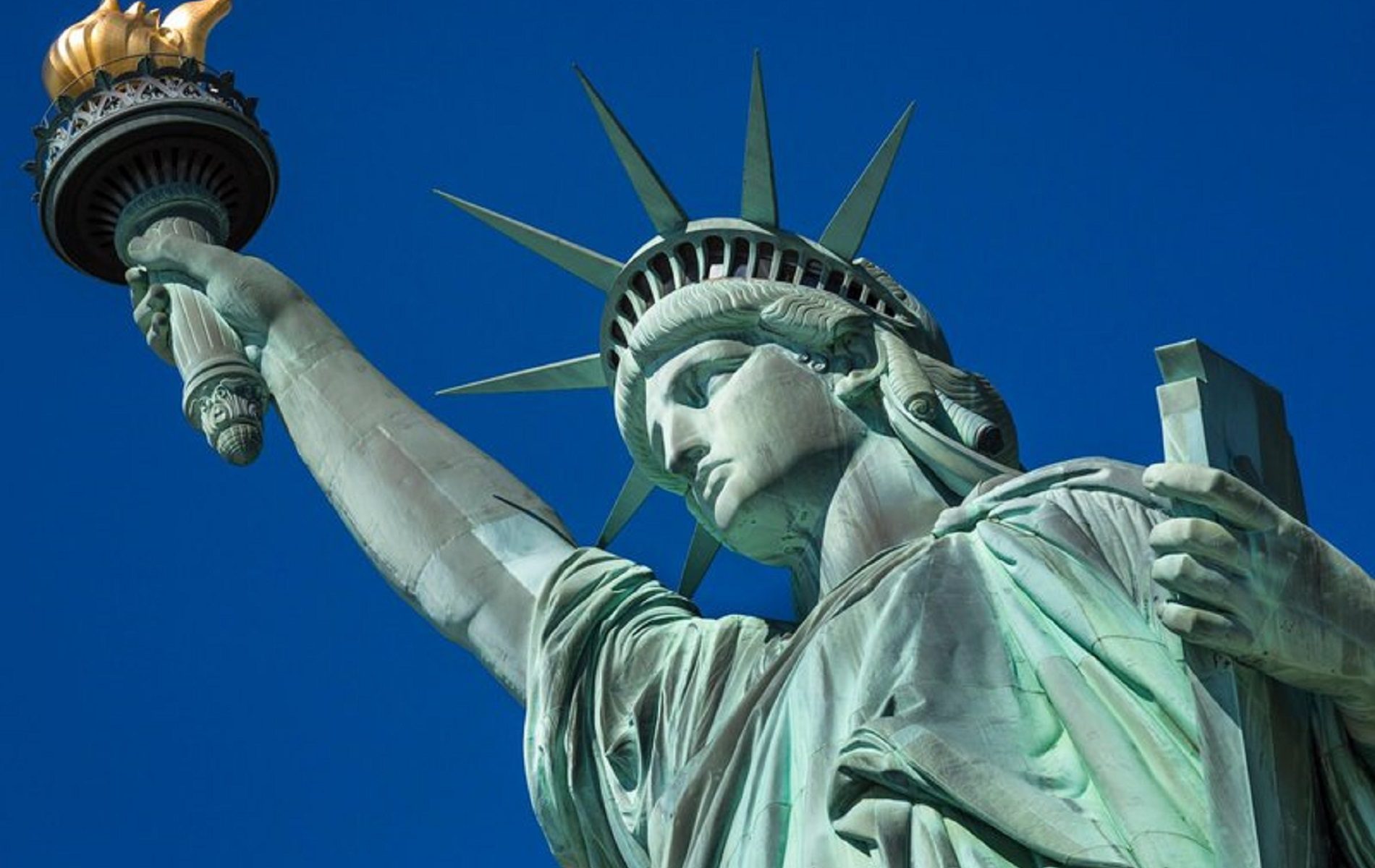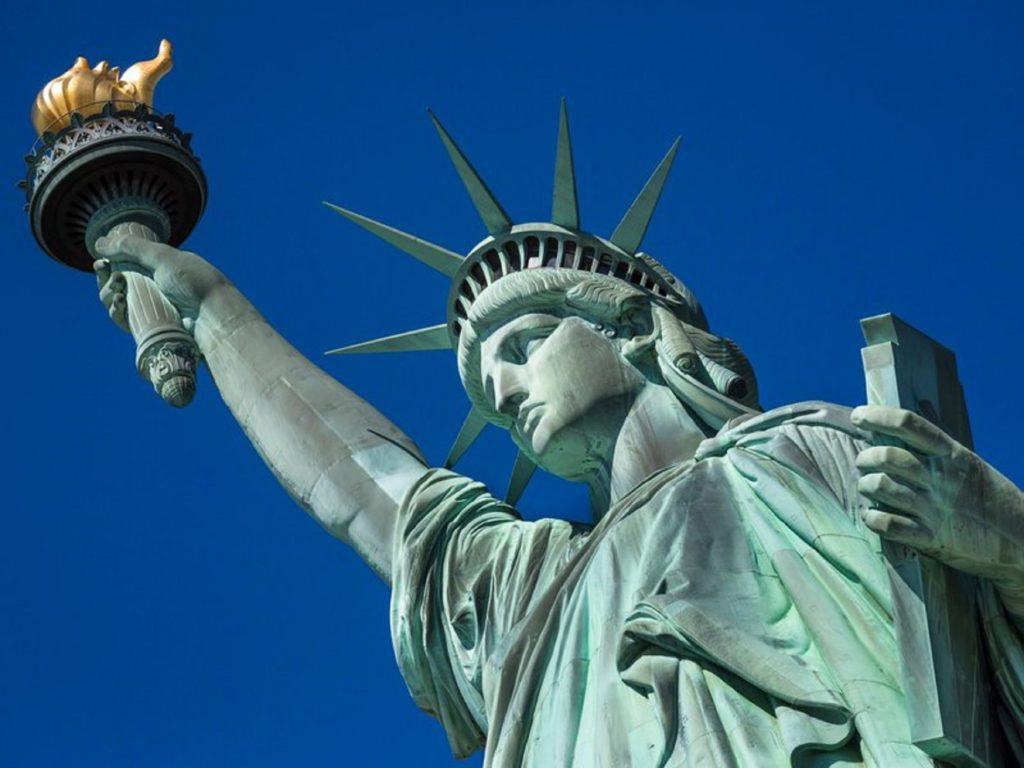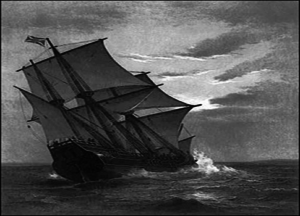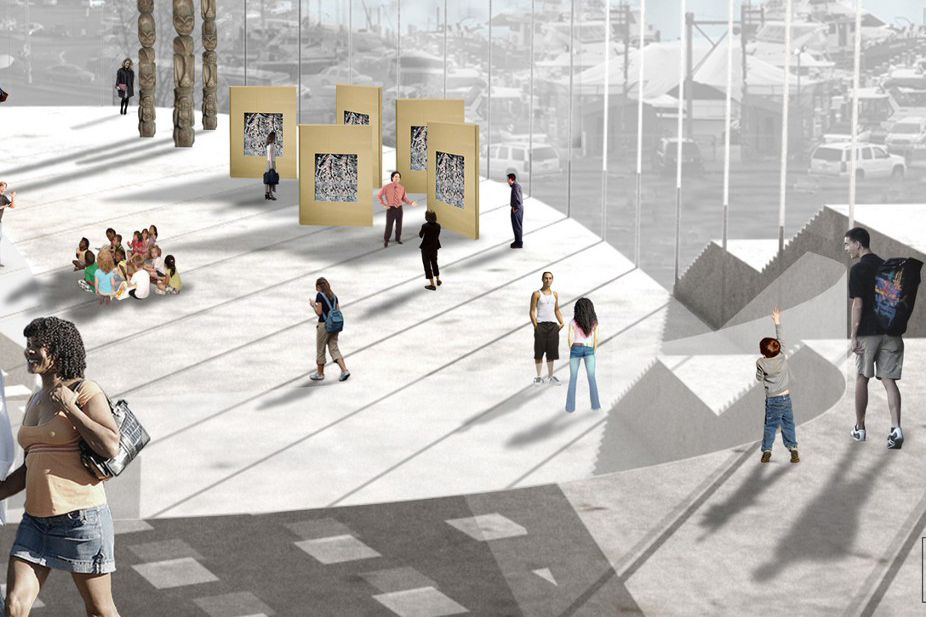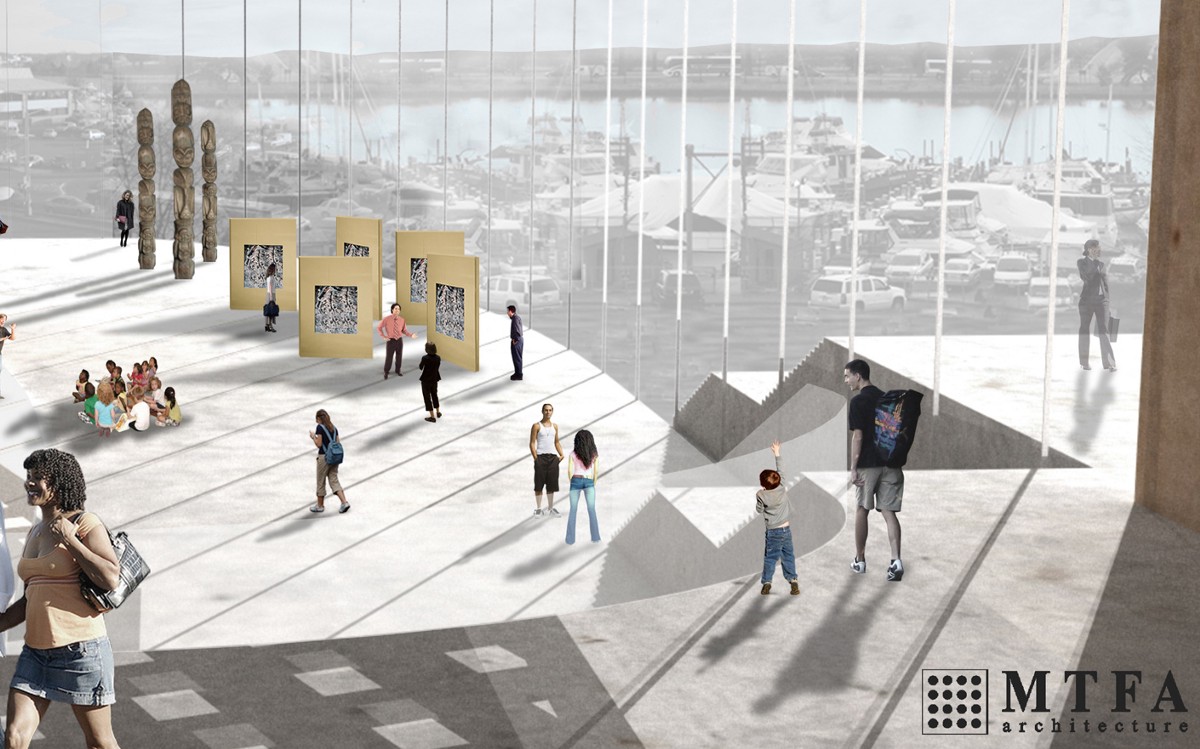
The gathering of peoples from throughout the world is the essential and ongoing American story. Yet there is little in our nation’s capital that tells the full story about all of the peoples that came to make this nation. This has left a monumental void in the midst of our capital that needs to be filled.
The favored site for the National Museum of the American People is the Banneker Overlook site. It is an eight-acre slope at the end of L’Enfant Promenade, an extension of 10th Street, S.W. The site is on a direct axis with the iconic Smithsonian’s Castle Building and reaches down to Maine Avenue and the Washington, D.C. waterfront along Washington Channel, an inlet of the Potomac River. It is adjacent to I-395.
The site is a short walk from the L’Enfant Metro stop. It is the only Metro stop that serves 5 of the system’s 6 lines. Washington’s Spy Museum is relocating to L’Enfant Promenade. There would be auto and bus access and parking nearby.
The large site affords an opportunity for the design of an architecturally significant building along with an inviting landscape. It is already one of the major sites in Washington designated as a location for a future national museum by three federal agencies that oversee the capital and the look it presents to the world — the National Park Service, National Capital Planning Commission and U.S. Commission on Fine Arts. The Overlook site is now under NPS jurisdiction.
The site also sits at the nexus of a major municipal effort to invigorate the DC waterfront area adjacent to the city’s bustling fish market. Across Maine Avenue from the museum site is the Southwest Waterfront project which opened in 2017 and includes condos, shops, restaurants, a river walk and other amenities to draw visitors from the Mall to the waterfront.
While the Banneker site is already joined to Washington’s core tourist area by a roadway and pedestrian walkway across I-395, there could be an effort to build a lid over the freeway to offer a stronger connection to these two sides of Washington. Such a lid could incorporate a park and sculpture garden to reflect the themes of the Museum. The proximity to the waterfront would also be used to extend the Museum’s exhibition reach to a pier where boats — actual and replicas — used for the migration and immigration to the U.S. are moored for visitors to explore.
While the Arena Stage theater anchors Maine Avenue at one end, this museum could anchor the redesigned waterfront at the other end. The Museum’s international food court and plaza, with a mix of restaurants and a gift shop along Maine Avenue, could remain open after museum hours and help to stimulate nighttime street life.
The site could include provisions for landscaping that could include major water features and flora to enhance the beauty of the Museum building and its property. It could also include works of commissioned art relating to the subject matter of the Museum.
Legislation would be required to transfer the Banneker Overlook site to the National Museum of the American People. The Museum at this site would present the opportunity to create a unique and lasting addition to our capital that tells our American story in an unforgettable manner.
This blog is about the proposed National Museum of the American People which is about the making of the American People. The blog will be reporting regularly on a host of NMAP topics, American ethnic group histories, related museums, scholarship centered on the museum’s focus, relevant census and other demographic data, and pertinent political issues. The museum is a work in progress and we welcome thoughtful suggestions.
Sam Eskenazi, Director, Coalition for the National Museum of the American People

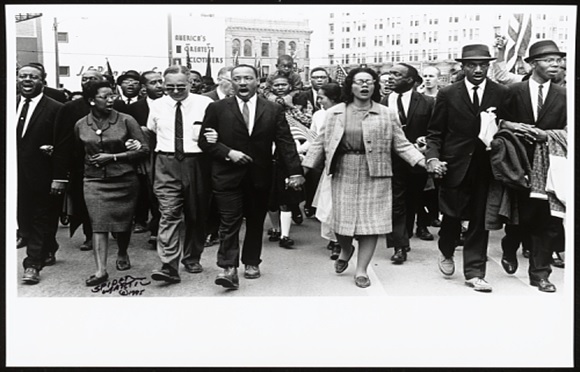

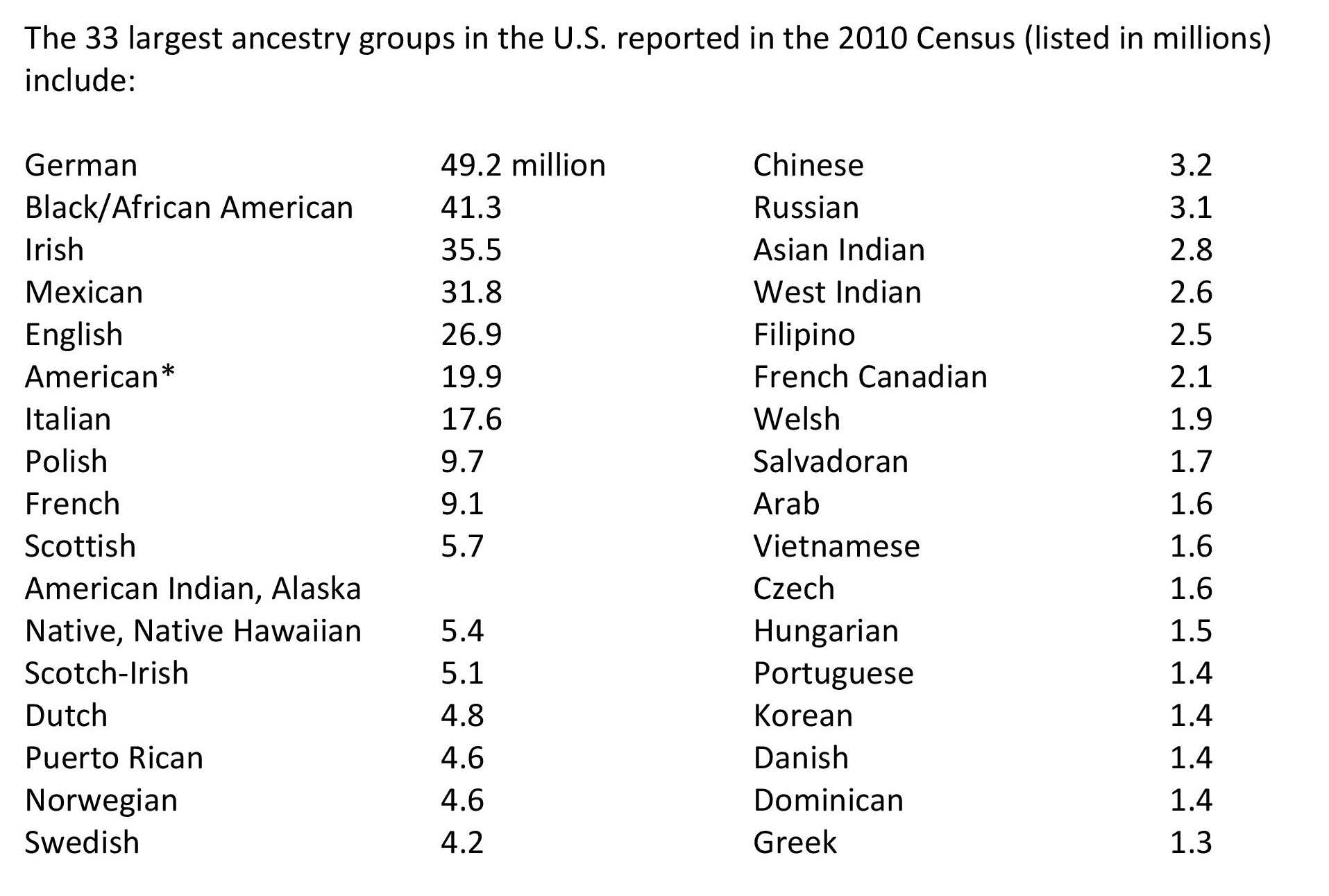 * Generally, people who put down “American” on the Census form have ancestors who came from England, Scotland, Ireland and Germany during the 17 and 18th centuries. They and their descendants thoroughly intermingled and 200 years later they describe their ethnicity as American.
* Generally, people who put down “American” on the Census form have ancestors who came from England, Scotland, Ireland and Germany during the 17 and 18th centuries. They and their descendants thoroughly intermingled and 200 years later they describe their ethnicity as American.